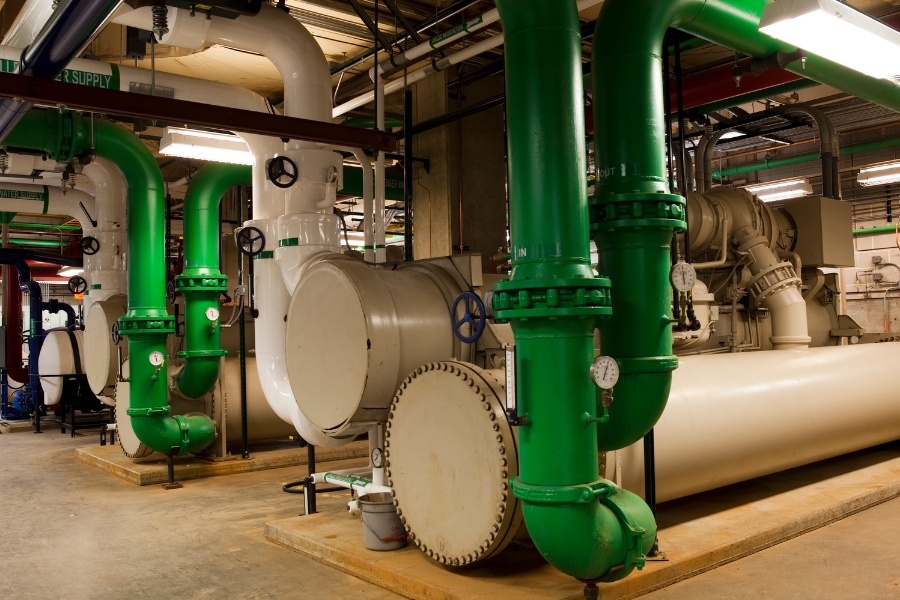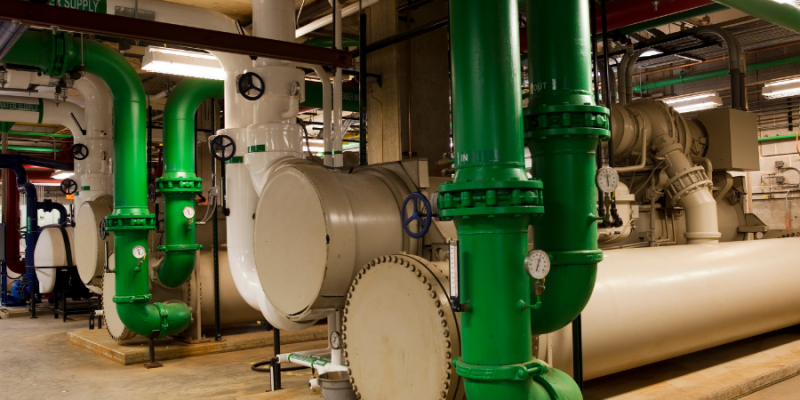
Monitoring and Filtration of Chilled Closed Systems
In some parts of the country, chilled closed loops run all year round. In other regions, they only run during the summer months. In theory, a closed loop requires no makeup, but some closed loops are not really as “closed” as one would like to believe, they are dumped and refilled every year and makeup is required.
In any case, treating and filtering chilled loops is not a one-size-fits-all endeavor. There are different corrosion inhibitors and filter options available. How do you choose?
Corrosion Inhibitors for Chilled Closed Systems
For years nitrite was the inhibitor of choice. It’s a fast-acting inhibitor which passivates steel pipes. When combined with azole for yellow metal protection, it continues to provide excellent results, especially on hot loops.
In chilled loops, denitrifying bacteria has driven the industry to explore other options. Molybdate has become a standard treatment. Yet, some municipalities restrict its use. Filming amine technology has become a new option for inhibiting corrosion in closed loops.
Before simply throwing just any inhibitor at the situation, it’s worth examining the application closely. Talk to Chemtex for advice on the best inhibitor for the job.
Filters for Chilled Closed Systems
As far as filters are concerned, there is a real science to how they function. For this application, the most common options for filtration are bags or cartridges. Birm filters can be employed but generally bags of cartridges are the go to options.

A bag is exactly what you think. You can see the entire surface of a filter bag. There are no pleats or hidden areas where filtering occurs. Filter bags have “holes” of different sizes, measured in microns. The smaller the size of the hole, the more particles will be removed, the lower the micron rating.
A cartridge filter has pleats or folds, these filters have much more surface area to catch the unwanted material.. The pleats and folds can translate to triple the surface area of a comparable filtration bag.
Changing bags is normally easier than changing cartridges. Both bags and cartridges can do an excellent job of removing iron and other foulants from a closed loop. Either filter option is better than no filter at all.
Even with a 1-micron filter, some particles will still get through and can cause discoloration and other concerns in a loop. Ask your Chemtex rep for information on our filter aid products. These can complement normal filtration and have a very positive impact on a discolored or troublesome loop.
Consult With the Experts at Chemtex
Each application is slightly different. Choosing both the proper treatment and the right filter is important. A chilled closed loop system can be very troublesome if not properly treated and filtered.
Don’t merely throw old or the wrong technology at treating a closed loop. It’s critical to treat them strategically and monitor the results of your efforts; you can modify them for greater success.
Please reach out to the team at Chemtex. We’d be happy to help you make sure your chilled closed loop system is functioning at its best.



/NQA-ISO-9001-Logo-ANAB.jpg)